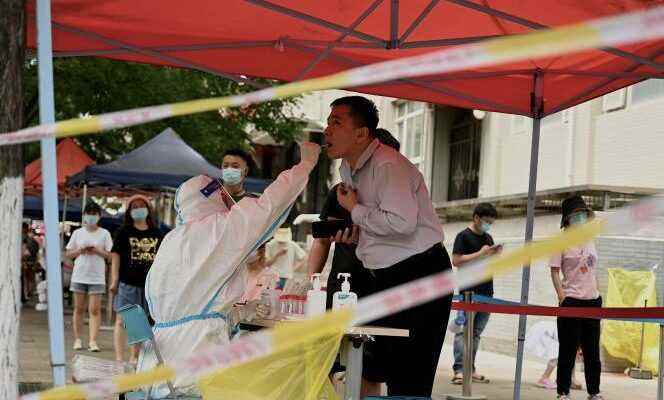Two months after the start of a confinement which, according to the authorities, was to last only four days, the vast majority of the twenty-five million Shanghainese can leave their homes again, from Wednesday 1er June. Likewise, the situation in Beijing, which has been under semi-lockdown since 1er May, is gradually returning to normal. With the exception of schools which remain closed and coffee shops which only sell take-out, most businesses and social activities have reopened, and employees are no longer forced to telecommute.
“We do not believe that the zero Covid strategy is sustainable, given the current behavior and, according to our forecasts, future of the virus”, said Tedros Adhanom Ghebreyesus, director general of the World Health Organization, on May 10. China intends to demonstrate the opposite. “After winning the battle against the epidemic in Wuhan and regaining the pre-pandemic level of productivity, then being victorious in Shanghai (…)China is showing the world that it has achieved remarkable results in this test and will do so in the future”trumpeted Li Junru, one of the theorists of the Chinese Communist Party in everyday life GlobalTimes from 1er June. However, the victory is only partial. The city of Dandong (2.3 million inhabitants), on the border with North Korea, is officially confined.
Symbols of the continuation of this policy summed up by the triptych “test, trace, isolate”, in Beijing as in Shanghai, the thousands of temporary tents, where the population must be tested, are gradually being replaced by fitted out and permanent containers. . The “new normal” only partially resembles the “life before”. Pekingese must be tested every forty-eight hours, and Shanghainese every three days. Without a test, access to shops and public transport is prohibited. Whether you are vaccinated or not. At the slightest positive case, hundreds or even thousands of contact cases are sent to quarantine for a week, and the buildings they have frequented are confined. Live in a considered area “like medium danger” (where cases have been identified, but not exceeding the number of fifty in the previous two weeks) – or at high risk (more than fifty cases) makes it materially impossible to buy a train or plane ticket. In addition, there is a good chance that the city you want to go to will refuse you access or impose a quarantine on you.
You have 40.93% of this article left to read. The following is for subscribers only.
